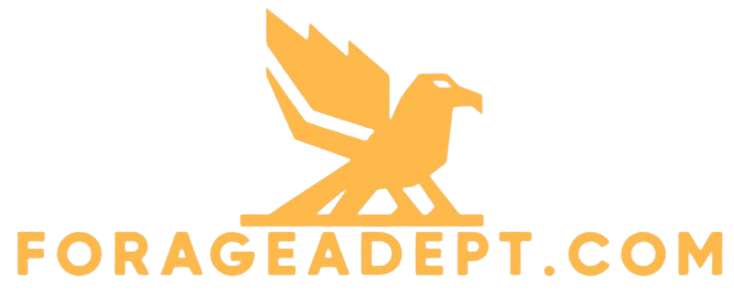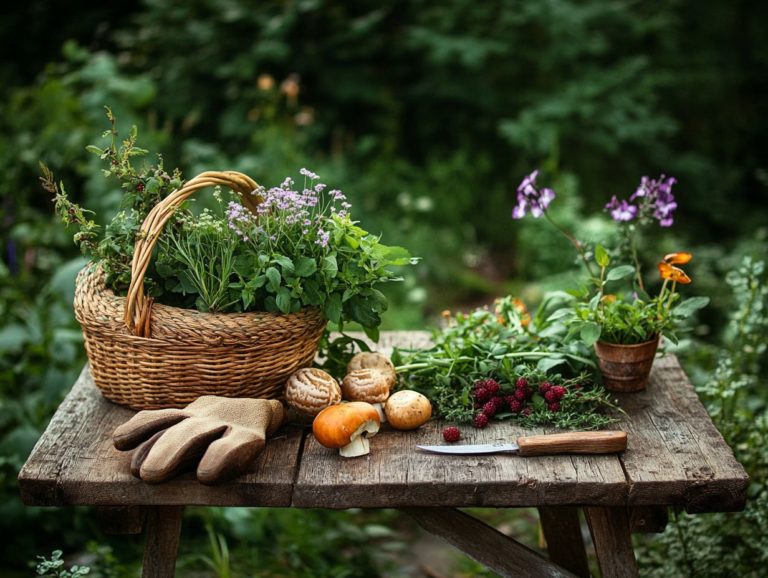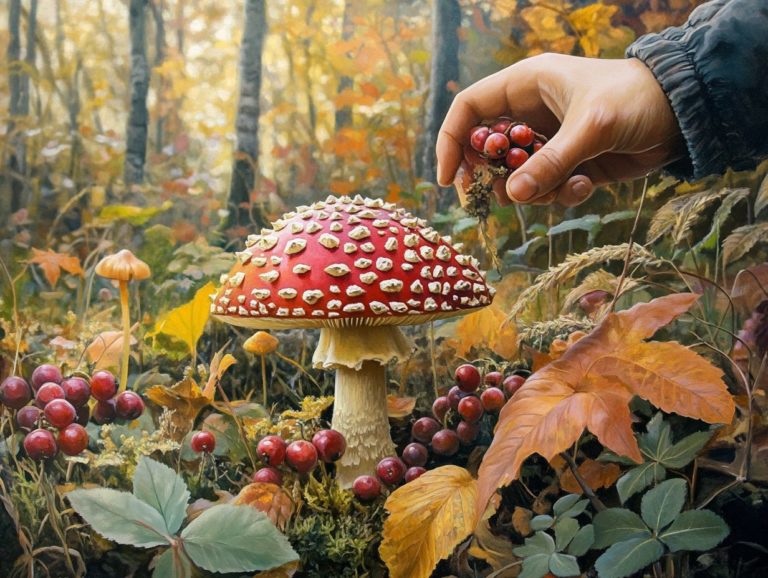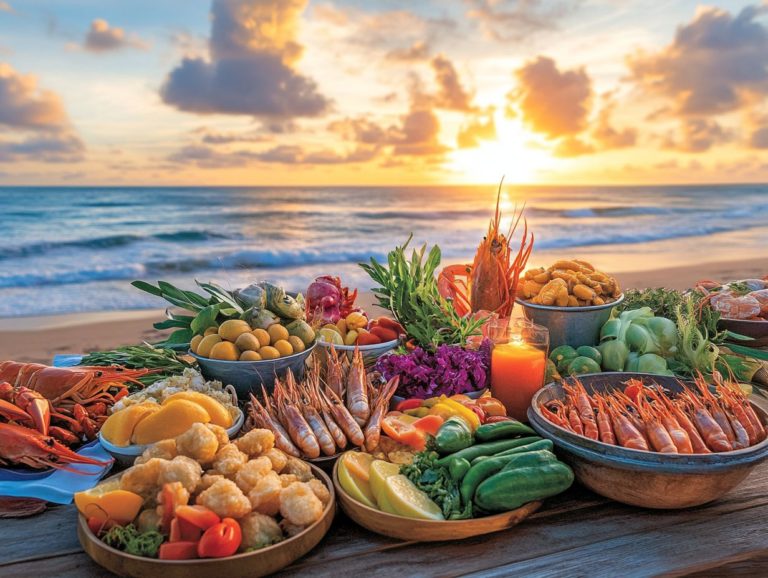Foraging and Sustainability: Seasonal Perspectives
Foraging presents an exhilarating opportunity to connect with nature, offering a wealth of edible plants that can elevate your culinary experiences and support a sustainable lifestyle.
You ll uncover the essentials of foraging, explore its myriad benefits, and discover how it contributes to environmental sustainability.
This journey will delve into the significance of seasonal foraging, outline best practices, emphasize safety precautions, and provide you with tips to minimize your ecological footprint.
Get ready to embark on an adventure into the captivating world of foraged delights!
Contents
Key Takeaways:
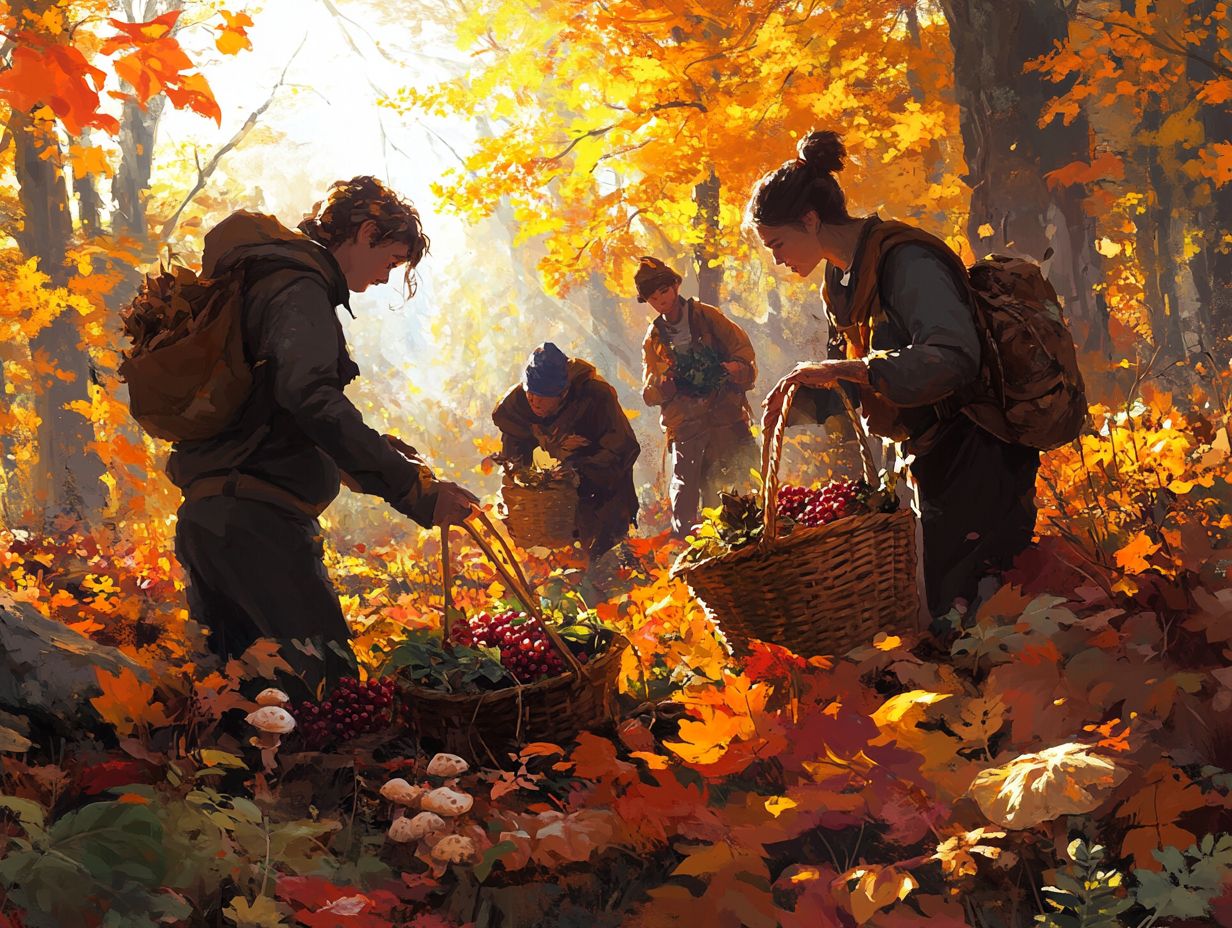
- Foraging is the act of gathering wild food sources, such as plants and mushrooms, from their natural environment.
- Foraging promotes sustainability by utilizing renewable resources and reducing the environmental impact of food production.
- Understanding seasonal availability and practicing responsible foraging techniques are important for maintaining a sustainable foraging practice.
The Basics of Foraging
Foraging, the art of gathering wild food, has recently captured your attention, thanks to its remarkable ability to elevate culinary experiences while championing sustainability. Exploring foraging for edible roots: seasonal insights can enhance your knowledge and skills in this rewarding practice.
This time-honored practice involves collecting edible plants, mushrooms, and other natural resources from the environment. It is steeped in traditional knowledge that has been lovingly passed down through generations.
As your interest in local foods grows and you lean towards ethical consumption, foraging offers a unique opportunity to reconnect with nature and embrace the rich tapestry of ecological diversity especially in regions like Scotland and within urban green spaces.
What is Foraging?
Foraging is the art of seeking out and gathering wild food, including a rich array of edible plants, mushrooms, and other natural treasures often overlooked in everyday cooking.
This ancient practice not only deepens your connection with nature but also addresses environmental issues that highlight the importance of preserving native plants.
In a world increasingly dominated by large-scale farming of a single crop, recognizing the value of diverse flora is crucial.
Wild foods like chanterelles and blackberries not only tantalize your taste buds with unique flavors but also offer remarkable nutritional benefits, all while promoting sustainable eating practices.
By responsibly harvesting these resources, you play a vital role in enhancing biodiversity which means having a variety of plant and animal life reducing the environmental impact of agriculture, and savoring fresh, seasonal produce.
This mindful approach fosters a profound appreciation for local ecosystems and encourages a more meaningful engagement with your environment.
Benefits of Foraging
The benefits of foraging extend well beyond simply gathering wild food; they embrace sustainability, community support, and the preservation of culinary traditions that connect you to your ecological heritage.
In a time when environmental concerns loom large and natural resources are under threat, foraging allows you to engage with the land and its offerings in a responsible manner.
By participating in foraging events, you not only acquire valuable skills but also cultivate a deeper ecological awareness, recognizing the vital roles native plants play in local ecosystems.
Supporting local communities is another great benefit; many foraging workshops bolster the livelihoods of local guides and indigenous populations who generously share their traditional knowledge.
This practice also enriches food diversity, introducing you to unique flavors and ingredients often overlooked in conventional grocery stores.
Influential chefs like Ren Redzepi embody this movement, artfully incorporating foraged ingredients into their menus, thereby elevating culinary experiences while honoring the rich traditions these ingredients represent.
Foraging for Sustainability
Foraging for sustainability is an exciting way to connect with our environment! It highlights the importance of responsibly harvesting wild food, allowing you to minimize your environmental impact while promoting ecological stewardship.
By engaging in ethical foraging, you have the opportunity to contribute to the preservation of wild biodiversity and support the delicate balance of ecosystems, particularly in regions facing the challenges of climate variability and habitat destruction.
How Foraging Can Promote Sustainability

Foraging champions sustainability by giving you access to wild ingredients that can be harvested in harmony with nature. Understanding seasonal foraging: why timing matters enriches the variety of plants and animals, promoting ethical foraging practices.
It connects you with local ecosystems and strengthens community initiatives that support local economies. For example, urban foraging workshops empower residents to identify and gather edible plants right in their neighborhoods, raising awareness about native species. This sparks local interest in sustainable practices and fosters small businesses like foraged food markets and restaurants that specialize in wild ingredients.
Reducing reliance on mass-produced food helps lower carbon footprints and address environmental issues like habitat destruction and pollution. Projects like community foraging groups showcase how collaborative efforts enhance ecological awareness while benefiting local communities.
Seasonal Foraging: What You Need to Know
Seasonal foraging is vital for elevating your culinary adventures while engaging with nature responsibly. Understanding the role of foraging techniques in sustainability becomes essential as wild edibles emerge at different times throughout the year.
This knowledge helps you identify perfect edible plants and mushrooms, like exquisite chanterelles in autumn or luscious blackberries in summer. By embracing nature’s rhythm, you enhance your foraging experience and deepen your connection to local ecosystems.
Understanding Seasonal Availability
Understanding seasonal availability is essential for your foraging success. It dictates which edible plants and mushrooms, such as blackberries and chanterelles, you can harvest at various times throughout the year.
In vibrant ecosystems like Epping Forest, discover a rich tapestry of ecological diversity that enhances food sources and shapes your harvesting timeline. Each season unveils unique collections of flora and fungi, all finely tuned to environmental cues like temperature and moisture levels.
This dynamic relationship allows you to anticipate prime times for treasures like wild garlic in spring or autumn’s abundant hazelnuts. By grasping the intricate relationships among species, you empower yourself to adopt sustainable foraging practices, ensuring these ecosystems remain vibrant for generations.
Best Practices for Seasonal Foraging
Best practices for seasonal foraging highlight the importance of responsible harvesting techniques that minimize environmental impact and promote the future of foraging and the sustainable use of wild resources.
To identify safe and edible ingredients, it’s essential to cultivate your skills in plant and mushroom identification. Utilize field guides or enroll in local workshops. Engaging with seasoned foragers provides invaluable insights, enhancing your ability to distinguish between look-alikes and safe options.
By following guidelines like harvesting only what you need and leaving enough plants for regeneration, you contribute to community sustainability. Participate in community initiatives focused on habitat preservation, ensuring future generations can enjoy nature’s bounty without compromising its integrity.
Foraging Safety and Precautions
Foraging safety and precautions are essential for savoring the delights of wild food while avoiding dangers linked to food poisoning and mushroom toxicity. Accurately identifying safe and edible plants is crucial; it significantly reduces foraging risks, including threats posed by deceptive mushrooms like the false death cap, which can lead to dire health consequences.
Identifying Safe and Edible Plants

Identifying safe and edible plants is fundamental to foraging safety. Understanding local flora and using herbal guides can prevent food poisoning.
As you embark on this journey, recognizing distinguishing features like leaf shapes, flower colors, and growth patterns becomes essential. You must also consider the environment where specific plants grow, as certain plants thrive in particular settings.
Consulting trustworthy resources, such as field guides or local foraging groups, is equally vital to steer clear of potentially perilous mistakes. Misidentification can pose serious risks, especially with fungi like the false death cap, which bears a striking resemblance to edible varieties but carries fatal consequences.
Stay alert and keep learning they are your greatest allies in foraging safely!
Precautions to Take While Foraging
Taking precautions while foraging is essential for a safe and sustainable experience, especially regarding your environmental impact and responsible harvesting techniques. This mindful approach not only safeguards various ecosystems but also helps you avoid potential hazards that might lurk in the wild.
It’s vital to familiarize yourself with local foraging laws, as some areas have specific regulations designed to protect wildlife and plant populations. Being aware of pollution levels at your harvesting sites can help you avoid contamination from pesticides or industrial runoff.
By adhering to food ethics like never over-harvesting and focusing on native species you reinforce your responsibility toward nature. Engaging with community groups will further enhance your foraging journey, providing a supportive network where you can share knowledge, experiences, and advice on safe practices for gathering wild edibles.
Tips for Sustainable Foraging
Tips for sustainable foraging emphasize the importance of minimizing your environmental impact while embracing responsible harvesting techniques. Learning about foraging in different seasons can benefit both you and the ecosystem. By adopting ethical practices, you can not only preserve the longevity of wild food sources but also support the delicate balance of the natural environment.
Minimizing Environmental Impact
Minimizing your environmental impact during foraging requires a deep understanding of sustainable practices that emphasize ecological stewardship and the preservation of native plants.
You should prioritize educating yourself about local ecosystems, recognizing which species are native and which are invasive. By steering clear of non-native plants, you can help curb the spread of invasive species that threaten local biodiversity.
Embracing leave-no-trace principles is essential; this means taking only what you need, respecting wildlife habitats, and ensuring the area remains untouched by your presence.
Community support can significantly bolster your efforts. Local groups can organize events that raise awareness and provide valuable resources, all aimed at promoting sustainable foraging practices. This fosters a collective commitment to safeguarding the environment for future generations.
How to Practice Responsible Foraging
Practicing responsible foraging means embracing ethical standards that safeguard wild food sources and promote long-term sustainability, with community support playing a vital role in conservation practices.
You should remain vigilant about respecting private property, as trespassing can lead not only to legal troubles but also to disruptions in the delicate balance of local ecosystems. Understanding local regulations is essential; these laws often outline foraging practices that maintain biodiversity.
By sharing knowledge within the foraging community, you enhance awareness and encourage responsible behaviors, creating a network of individuals committed to sustainable practices.
Exchanging tips on plant identification, ethical harvesting, and safety allows foragers to contribute to a culture of respect and stewardship that ultimately benefits everyone involved.
Frequently Asked Questions
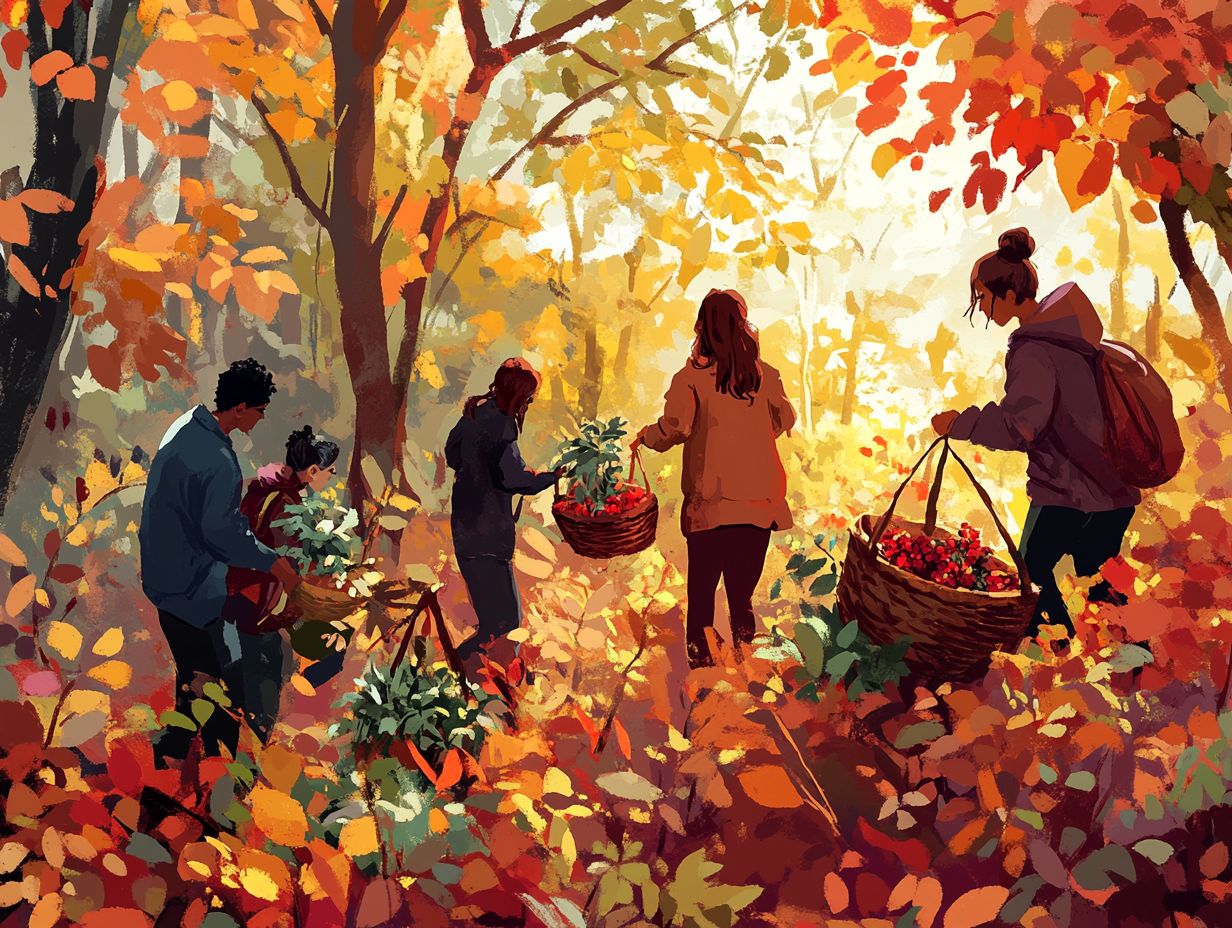
How can media influence foraging practices?
Media plays a significant role in promoting foraging. Celebrity chefs like Rene Redzepi and restaurants such as L Enclume show the beauty of local ingredients.
What is foraging?
Foraging means searching for food in the wild. It involves finding and collecting edible plants, fruits, nuts, and other natural resources.
How does foraging contribute to sustainability?
Foraging helps protect our planet! By choosing wild foods, we lessen the need for commercial farming practices that can harm the environment.
What are the benefits of foraging during different seasons?
Foraging in various seasons offers a diverse and nutritious diet, with different plants and resources appearing at different times of the year. To learn more about the importance of responsible foraging, check out seasonal foraging: protecting edibles and ecosystems.
This practice promotes a deeper connection with nature and serves as a form of outdoor exercise.
How can foraging be practiced sustainably?
Practice sustainable foraging by taking only what you need. Always leave enough for plants and ecosystems to thrive.
It’s crucial to identify and avoid endangered or threatened species, and to forage where it’s allowed.
Is foraging legal?
The legality of foraging varies by region and country. Research local laws and regulations before foraging.
Some areas might require permits or have specific rules, especially in protected or private lands.
What are some safety considerations when foraging?
Properly identify plants before eating them; some can be poisonous or cause allergic reactions. Avoid foraging in polluted areas, and always wash and prepare your finds thoroughly.
Start your foraging journey today! Explore your local area and discover the treasures nature has to offer.
